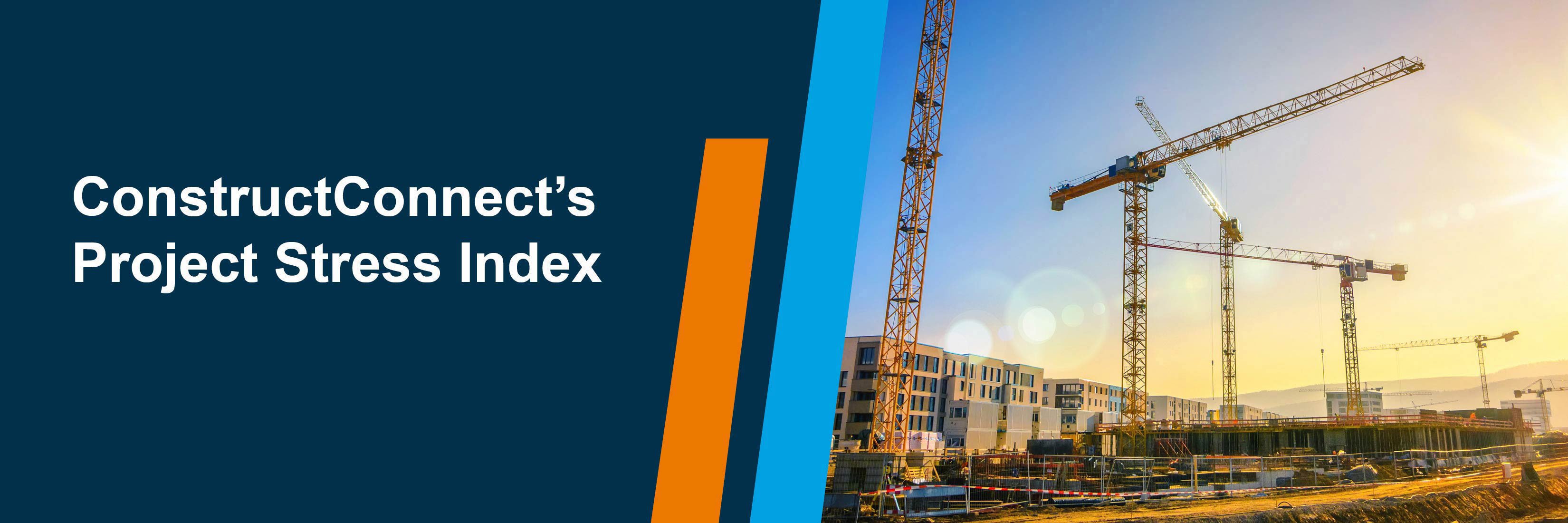Read this article to understand the level of U.S. nonresidential construction projects that have been delayed, on hold, or abandoned.
COMPOSITE OVERVIEW
The Project Stress Index (PSI) composite closed December 2024 at 105.6, falling 7.4% for the month when compared against a downward revised November reading of 113.9.
The month-on-month fall was driven by declines in the number of projects experiencing bid date delays (down 10.8%) and abandonments (down 16.1%).
The level of projects placed on hold rose by 6.2% from the prior month. At the end of 2024, stress conditions were only slightly higher than those of the Index’s 2021 baseline, represented by a reading of 100.
Additionally, 2024’s year-end reading marks a 13.5% decline in stress conditions compared to 2023’s year-end reading of 122.
Despite the latest decline in stress conditions, many concerns and conflicting forces make predicting what will happen to conditions in 2025 difficult. Yields on corporate debt in early January reached 6.1% —a 9-month high— even though the Federal Reserve cut the Fed Funds Rate three times between September and December.
Additionally, loan officer surveys indicate that banks continue to eschew commercial real estate (CRE) loans. During 2024, banks hardly grew their CRE loan portfolios, leaving them frozen at around $3 trillion. Tailwinds to the industry in 2025 are many but variegated.
The new presidential administration may be able to substantially ease the regulatory landscape, shortening the path to the groundbreaking of new projects. Potential tax cuts and the continuation of a relatively strong jobs market would also help to support the overall economy and construction.
COMPONENTS MONITOR
| Delay Bid Date |
On Hold |
Abandoned |
 |
 |
 |
SECTOR STATUS UPDATE
Due to the disparate market forces that influence them, public and private construction projects often exhibit distinct stress trends. During December, the number of bid-date delayed projects fell in both sectors. In the public sector, the decline was in keeping with historical norms; however, the number of private, delayed projects was 28% lower compared to December 2023.
This latest Project Stress Index reading also had the distinction of being the lowest monthly reading since 2019. A similar distinction was observed among projects put on hold, with December’s private results being substantially lower than year-ago results.
In comparison, year-on-year public sector results were almost unchanged and well above historic lows. Finally, December’s abandonment levels for both sectors touched two-year lows and were well below year-ago levels.
About the Project Stress Index
The Project Stress Index (PSI) composite represents an equal-weight measure of the seasonally adjusted level of preconstruction projects that have experienced a delayed bid date, been placed on hold, or abandoned in the last 30 days. The PSI only monitors nonresidential and multifamily projects in their preconstruction phases, thus excluding any single-family home construction. Each component has been seasonally adjusted and then indexed against its 2021 average weekly reading. The independent tracking of each status type gives unique insights into market changes’ timing, direction, and amplitude. Additional information about the PSI, including detailed data about the individual readings for delayed, on-hold, and abandoned projects, can be found here.
